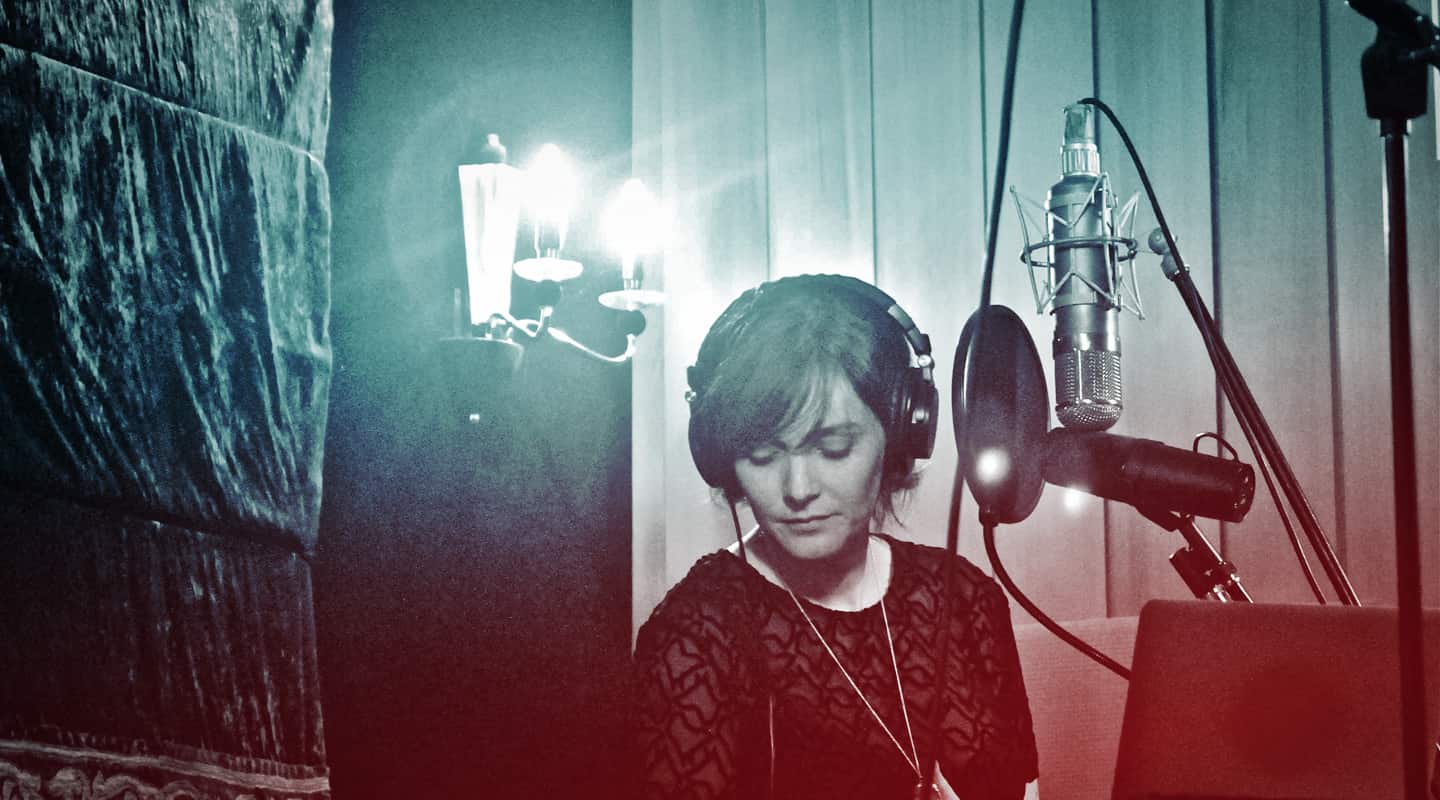
Blasko’s Eternal Reinvention
While carrying her first child, the ever-changing Sarah Blasko riffed on love and her childhood in the synth pop-laden 'Eternal Return' — her first album recorded in an Aussie studio.
Photos: Jess Chapnik & Natalie van den Dungen
It’s too early — for a number of reasons — to call Sarah Blasko ‘Australia’s Bowie’, but her restless creative spirit is at least kindred of the master of reinvention. Blasko’s most recent solo effort, Eternal Return, sees the artist remodel her output once again. Blasko says the album is “totally about love” — the most eternal and unchanging of subjects — and a return to feelings she experienced at a young age. She has given shape to these themes in ways that make Eternal Return a radical departure from her previous album, which was a departure from the one before, which diverged from the one before that… you get the idea.
Here’s a brief field guide charting Blasko’s kaleidoscopic discography. Her 2004 debut The Overture & the Underscore put her on the map as one of Australia’s most important new artists of the decade. Its guitar-driven, folk-meets-electronica pop was recorded in LA with help from fellow Australian songwriter Robert F Cranny. What The Sea Wants, the Sea Will Have, again made with Cranny, was recorded in New Zealand and won an ARIA for Best Pop Release, a coup considering it featured what can best be described as Baroque Chamber Pop. Fast forward a bit and Blasko headed to Sweden to record As Day Follows Night with Swedish producer, and Peter Bjorn and John bassist, Bjorn Yttling. It featured more melancholic chamber pop, this time piano-driven and jazz-influenced. It earned Blasko a Best Female Artist ARIA Award. Then there was an ambitious self-produced orchestral album, I Awake, recorded in Bulgaria and in Sweden.
As quickly as she picked up the orchestra, Blasko dumped it for analogue synths and a drum machine. Made with producer Burke Reid — best-known for working with guitar acts like The Drones, Dan Kelly and Jack Ladder — Eternal Return happens to be the first album Blasko has recorded in her native land of Australia, at The Grove Studios an hour north of Sydney. Over Skype Blasko explained that the roots of Eternal Return’s direction can be found in her branching out into other compositional ventures, such as an experimental collaborative album called Emergence made with composer Nick Wales in conjunction with the Sydney Dance Company; and writing the music for Brendan Cowell’s feature film debut Ruben Guthrie. Composing music for Del Kathryn Barton’s animated short The Nightingale and the Rose was particularly instrumental in pushing Blasko towards using synths.
“I started writing the music for a new album on piano like I had done for the previous two, but I was just repeating myself,” recalled Blasko. “Then I bought a Dave Smith Instruments Prophet ’08 and grew to love the sounds and the feel of playing it. It felt refreshing after two essentially acoustic albums. I used the Prophet on a couple of film projects, Del Kathryn Barton’s film being one of them. It’s based on a book by Oscar Wilde and there was a real aggressiveness and intensity to the visuals and the story, which really suited synthesizers. Playing an analogue synth is like plugging a guitar into an amplifier, it has a very powerful feeling to it! So my film score was just voice and synthesizers. After that I kept going on that trajectory!”
OPENING THE ENVELOPE
Blasko’s ‘trajectory’ took her deep into the mysterious and unpredictable world of analogue synthesizers, which require both musical and technical adroitness to operate. However, about the first thing Blasko said — aware that the interview was for AudioTechnology — was “I have to warn you, I am not very technical.” This, however, is a bit of a red herring, for not only did she clearly reach a high degree of proficiency in operating all those pesky buttons that can litter the surface of analogue synths, but she is also quite adept at using the Pro Tools system she has at her house. Plus, on previous albums she has accumulated drum programming and engineering credits. Clearly, Blasko is no technophobe or Luddite.
“I’ve had to delve more deeply into Pro Tools than just using it as a tape recorder because of the film music I was doing last year,” Blasko admitted. “It makes sense to be able to do more at home than to continue taking things into commercial studios. I got myself a bit more equipment; one of those API lunchboxes with some Neve mic preamps, which go into a Pro Tools Mbox. I also have a couple of reasonable microphones, I think they’re made by Røde. I am terrible at remembering gear names, particularly the numbers. But I suppose I am kind of nerdy in that I like to get a good result when recording at home, and often end up keeping stuff I’ve recorded there.”
Blasko recounted the first creative steps of Eternal Return, which began with demos at her home studio mostly using her Prophet ’08. “After doing that for a while I thought that it would be a great idea if I wrote songs with some friends I’ve been playing music with for 10 years. We know each other’s likes, and yet have never written songs together. I invited them to go away for a week, and all we brought was my Prophet ’08, a Korg MS20, a Rhythm Ace drum machine and a drum machine on an iPad. We recorded straight into an iPhone because I didn’t want to labour over the demos. After a while we had 20 or 30 songs that were loosely finished, which is when I started working with Burke.”

HATE’S A STRONG WORD
Blasko’s invitees were guitarist Ben Fletcher, composer Nick Wales, and keyboardist David Hunt. Her invitation to Burke Reid to produce the new album was a little counterintuitive, not only because Reid is known for working with guitar bands, but also because Blasko had produced her previous album herself and seemed perfectly capable of continuing along these lines. Regardless, Blasko wanted to be directed. Initially, Sarah “thought it would be a weird match but that it had good potential”, so she trialled Burke on two songs, Only One and Say What You Want. “I liked his enthusiasm, his passion for music,” she found. “He’s not an egotist and he’s happy to change direction at any point. Working at Grove Studios, where he’s mostly based, really suited me because it wasn’t far from home and I was pregnant.”
It wasn’t all roses. In an interview with a British newspaper Sarah said, ‘I really hated Burke a few times!’ Blasko clarified what she meant: “Hate is definitely a strong word. I’m not sure it’s an entirely accurate description, but there were times when I found he was pushing me to pull apart the songs and that can be really painful for someone who’s constructed them. It’s why I wanted to work with a producer, but there’s nowhere to hide when someone is in that role asking you to question what you hear in your head. I knew it was making the songs stronger in many ways. I had to let go and trust him, which is difficult when you haven’t worked with someone before. I was also occasionally grumpy at him sheerly out of fatigue because we worked such long hours — often from 11am until 3am. But it was a hell of lot of fun.”
The man in question laughed when confronted with the ‘hate’ quote, and commented, “There were some points where I was used to working in a certain way, and she wanted to know why. I’m not a very confrontational sort of person, and in these scenarios it was a matter of trying to keep the show running and making sure everyone’s opinions got heard. At times, my job as a producer is to do some pushing, and sometimes I may say a few things that are difficult to hear for an artist, like, ‘that’s good, but maybe it could be better.’ People’s songs are a little bit like their children. If you think they’re being a bit too lazy as a parent, or too strict, you have to be very careful how you comment on them. You may get a few on the chin, but that’s what you’re called in to do as a producer! Ultimately you develop a mutual trust, knowing that you’re all looking to make sure an album becomes the best it can be.”
The mutual trust and occasional bit of friction that are part of Reid’s modus operandi as a producer have definitely stood his career in good stead. His band Gerling was nominated for an ARIA award three times. Following this he cut his engineering teeth at Big Jesus Burger studio in Sydney, “getting lunches for people and eating humble pie!” While there, he bluffed his way into engineering and producing The Mess Hall’s Devil’s Elbow, which won an Australian Music Prize. From there Reid went on to engineer, mix, and/or produce albums by Jack Ladder, The Drones, Liam Finn, DZ Deathrays, Courtney Barnett, and many more.
Reid currently divides his time between Canada and Australia, but spends most of his working life at The Grove Studios, which was bought by producer/ex-BJB co-owner Scott Horscroft a couple of years ago. Despite featuring the accoutrements of a holiday resort, it’s apparently possible to get solid work done there.
Convening at the studio in late 2014 were drummer Laurence Pike, bassist Donny Benét, David Hunt, and guitarist Jim Moginie, occasionally aided by Reid on rhythm guitar and Matt Keegan on saxophones. Blasko stated, “We used a host of authentic, aged synths. Donny didn’t only play bass, but also brought his collection of vintage synths, which included a Prophet 5, a Moog, a string keyboard called a Stradivarius, an Arp, and many more, plus I brought my Prophet ’08 and Korg MS20. Donny, David and I played them. We had a synth station laid out of about 12 synths, and late at night we’d have synth time. We were all a bit delirious and would play melodic lines over what we already had.”
Reid added, “As we got more into the album it became increasingly apparent that guitars weren’t going to be a feature, so the guitars we did use were very sparse, effect-laden and soundscape-like, rather than purposeful notes. You’re not going to write guitar tabs from those guitar parts! The focus was on the drums, bass, synths, and her vocals.”
People’s songs are a little bit like their children. If you think they’re being a bit too lazy as a parent, or too strict, you have to be very careful how you comment on them

ETERNAL, NOT RETRO
The synths used in the making of Eternal Return all date from the 1970s and 1980s — no soft synths were involved — which gives the album an ’80s sheen, with echoes of anything from Donna Summer to Gary Numan to Depeche Mode to Soft Cell.
Despite the references to the ’70s and ’80s, Blasko and Reid emphasised that Eternal Return is not a retro album. Reid elaborated, “I’m not big on trying to go for retro sounds. You’re always influenced by tones and ideas from the past, but they are usually just starting points. We weren’t saying to each other, ‘let’s make it sound ’80s’. We were just using synths that are associated with that period. Once the general atmosphere of a song started to take shape, we didn’t think about whether the sounds we used belonged to a certain genre or time period, we just went with what sounded best to us.
“The discussions were purely about what each song needed. Turn on a synth, create a sound, play until it sounds cool, and then record that. The starting point in the studio was Laurence playing to a click or a loop. Getting the tempos exactly right was incredibly important for these songs and helpful for workflow because we were mostly building the tracks up brick by brick. We’d occasionally record drums and bass together, but we’d always record alongside a guide vocal. Laurence, and sometimes Donny, would put down a rough outline for most of the songs, and then we’d change tones and microphones for the drums and bass of each song. If it worked, it stayed, if it didn’t, we’d redo it.”
Reid tried to record the instruments as he wanted them to sound, using plenty of Studio 1’s outboard on the way in. He went for a “fairly standard” drum recording setup, experimenting by adding “some odd microphones. I’d have an SM57 on the snare, and a Sennheiser 421 or AKG D12 on the kick, or maybe a Røde Classic tube. Sometimes I’d put an SM7 above the kick, just over the lip between the snare and the floor tom. I find that this gets me a great overall mono kit sound that I’ll saturate/distort/compress and add in with the other mics to flesh the sound out. I recorded the cymbals separately, and would remove them during the actual drum recording, so they weren’t resonating along. Laurence also played in a really small room next to the control room, so I put up different mics and compressed them to bring out the odd tones. We also had a few drum machines, like the Roland TR808 and 909, here and there, but we always triggered them by hand and added them to the live drums.
“I recorded Donny’s bass through a DI and an Ampeg SVT amp, sent to a Distressor or an 1176 and an old Evans ‘Echopet’ rackmount delay unit which also has a spring reverb in it. The distortion you hear on the bass mostly comes from the Evans. We also often doubled the bass guitar with some keyboard bass from a Moog. The keyboards — which also included a Roland Juno 6, Mellotron, MicroKorg and Nord Lead — were DI’d through a Chandler Germanium. Very occasionally we’d send a keyboard through an amp for some room sound and air. I often used the Ensoniq DP4 on the synths, which is an ’80s multi-effects unit I like for its simplicity. I’d cycle through the presets and quickly find something to give it the right tone and vibe.
“David also played piano on the album. Sometimes we used the Nord piano — EQ’d strongly with effects — because it fit better in the track. When we used the upright at The Grove we liked the sound of it with the dampener on. I’d record it with a stereo pair of condensers like Josephson E22s or Neumann U47s if I wanted something very detailed. I tend to mic uprights from behind, if possible. I like the sound off the soundboard behind the piano, as opposed to the top where the hammers are. I might also take the bottom front soundboard off, where the foot pedals are and place an additional mono microphone there. It’s where the strings cross over, so it will pick up the highs and lows. Depending, of course, on how creaky the foot pedals are!”
SINGING TO YOUR BABY
Reid: “I usually have an SM57 and a Royer pointed at the guitar amplifier, but because we were using so many guitar pedals, getting pristine guitar tones and the exact guitar mics and mic placements were not that important. Only two or three songs have minimal guitars. The twangy guitar sound at the beginning of Luxurious is actually a bass, played high up and going into my Guyatone Tube Tremolo pedal, DI’ed and split into the Evans Delay and a plate in the Grove cellar. We usually used Neve 1064 mic pres on the guitar, bass and drum mics, though I also used some Quad Eights on the drums, because they’re a bit faster than Neves.
“I recorded Sarah’s vocals with a Neumann U47, going through a Brent Averill 1073 mic pre and then a Distressor. Generally Sarah did not want the vocals too treated, so we kept it fairly safe. I don’t like to record vocals with EQ, so I just had a hi-pass to get some of the rumble out. Sarah is very particular about the effects on her vocals, so while I might have had a reverb for her to sing to, I didn’t record it. Any vocal effect would have been applied by David Wrench during the final mix. The reason I don’t generally EQ vocals is for safety. If you add too much high end, you can struggle with sibilance later. Also, if you’re recording vocals in stages with weeks or months between sessions, it makes it easier to drop in and match the sounds.
“I do mess around a lot with the vocal microphone position, distance and angle. Depending on the singer and the way they sing, you can get a lot of mouth noise and sibilance. I look at the profile of the singer, and watch whether their head angles up or straight or down, and try to find the best-sounding spot for the mic; often just above or below the mouth and on an angle. I put the mic either the distance of a fist or an open hand away. Sarah moves around a lot, most singers do, especially if they have a big, strong voice. I try to find a position where I won’t lose all the vocal sound even if they go off-axis. In Sarah’s case I positioned the mic straight at her, just above the mouth, and about a fist way. If it’s a slower song with a lot of focus on the vocals, I often place the mic even closer, so you can use the proximity effect to fill out the vocal sound. Normally you don’t want that much bottom end in faster-paced songs.”
The lead vocals were all overdubbed towards the end of the recording sessions, around March 2015 when Blasko was reaching the third trimester of her pregnancy. “This made singing physically difficult for her,” recalled Reid. Apparently Blasko was at times literally gasping for breath and regularly had to stop, which meant that the vocal overdubs took a long time. After having spent several months distilling the sounds of her childhood onto a record, time and a new kind of childhood were catching up with Blasko. She was changing yet again.


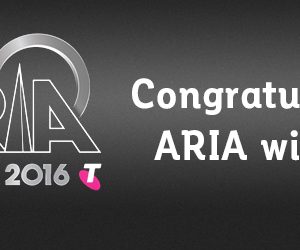

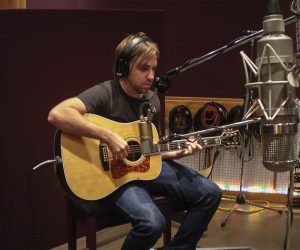
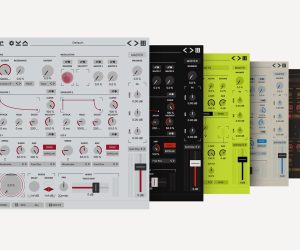
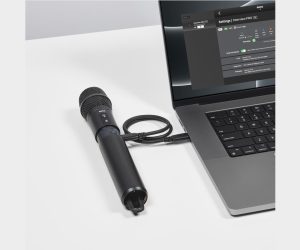
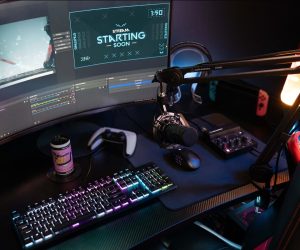
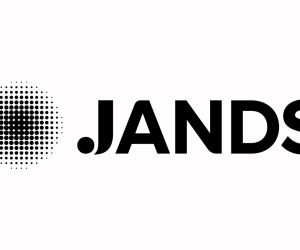
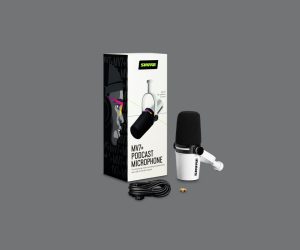
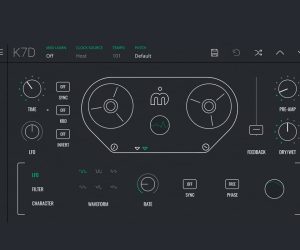
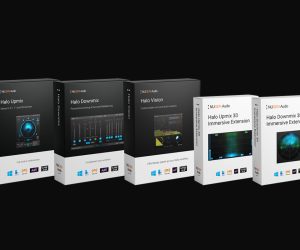
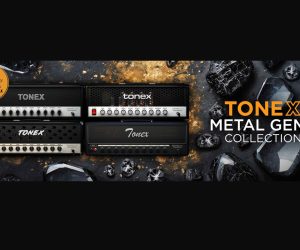



RESPONSES